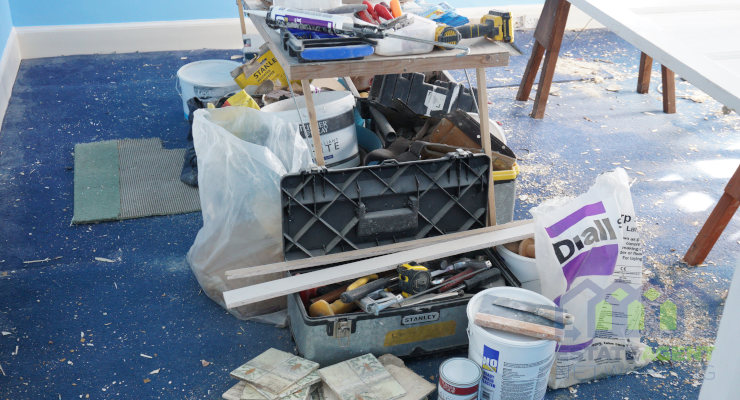Renovation Is All Well & Good – But How Can You Decide On Your Plans?
You’ll often see many home building or interior decoration blogs talk about the benefits of renovation and the principles to keep when planning one. But for all of the advice given, no blog writer can offer you specific, personal advice about what you should do with your particular home. They have no idea where you live or how your home is structured and that is certainly for the best.
This can lead to something of a disconnect though. While you’re not exactly looking for a 1:1 manual, for someone trying to chart their own renovation, figuring out how to make it through all the bluster and the jargon feels like a full time job. Furthermore, even if we take a few design ideals from a couple of magazines or even a spectacular Instagram feed, there’s no guarantee that the disparate ideas we like will even work together with clarity. That can be hard to handle.
Renovation is all well and good, of course, but how can you decide on your plans in the first place? In this guide, we hope to empower you by offering a range of tools designed to answer this question:
Identifying Your Actual Needs
It’s healthy to identify exactly what it is you’re looking for in a renovation in the first place. Not to sound dismissive, but when people tend to think that they can schedule a renovation because of having the time and budget to do so, it’s easy to get excited. But of course, simply making the space ‘look better’ or ‘become more valuable’ isn’t necessarily a given.
We need to define our actual goals and needs for a particular home design. It might be, for instance, that you’re expecting a baby on the way in seven months, and wish to convert a large master bedroom into two rooms so that you have space for the little one, rather than having to move to another home entirely.
Perhaps you’ve just managed to move into a new home for the first time, but it’s a little bit of a fixer-upper. It might be that renovations in this space may entail ensuring new structural supports, tearing everything inside to the basic foundation, and slowly making the area livable. Maybe you just wish to add a conservatory to extend the space a little and welcome in more of that fantastic view and sunlight exposure your house is lucky enough to have. A good combination of effects in this light can help you plan your approach more diligently.
Weighing Up Your Budget
Of course, nothing happens without a budget to give it momentum. Renovations can get costly, quickly, if we don’t plan the exact scope of what we need. Even then, arranging a slight buffer zone you can use to pay for any unexpected issues, such as accidentally breaking materials while installing them, or to keep the project going should it go a little over-schedule can be worthwhile.
This way, you can determine if a renovation is going to be a whole-hog affair or if it’ll require a peacemeal approach to each element of a room. Both are fine. But they require different planning strategies.
Determining A Deadline
It’s good to determine a deadline for your renovation, also. This will help you determine scope. For instance, it might be that you hope to sell your home after the summer holidays are done with.
That gives you roughly three months to execute a project to completion, which can then be unveiled as you put your house up for market and begin the house hunting journey.
Renovation As A Justification For Repair
It’s a great idea to consider how renovation, as a justification for repair, can be planned in advance. Many homes need maintenance and sometimes they need to be fully outfitted and corrected once more. A staircase, for instance, may not have the structural strength it once did, and is now becoming a little bt risky to utilize. It might be that renovating that or replacing it entirely as you replacing the flooring on the bottom and upper landing could be key.
A justification for repair, of this nature, can make a tremendous difference in the overall structure of your home. It can also help you hit a few birds with one stone, instead of planning separate projects to fix and improve your space.
Aesthetic Testing & Samples
As much as you can, designing the space before you commit to any lasting changes can help you tremendously. Of course, it might be tough to understand exactly how you should go about this. Thankfully, samples can be the best way forward.
We all know that paint samples can help us see the color of the walls in real time. But are there any additional options? We believe so. Free brick slip samples, for instance, can help you design a feature wall more easily. This way, you can choose which texture you’d prefer to enjoy, and to what extent a home that looks more rustic can help its look and even value.
Finding The Architectural Planning
To the degree that you can, having architectural plans or blueprints (an outdated term) made up can help you understand the overall design of the structure. This can help you understand the true dimensions of a property, as well as room orientations and installations.
This can help you avoid embarrassing issues such as putting a door on the wrong way, or implementing a toilet in a bathroom space that blocks the full opening of the door as you’re trying to enter. If you don’t have these birds-eye plans, then an architect will often be able to generate that for you, and usually to an easily-viewable scale.
Utilizing A Consultant
There’s no shame in bringing a consultant into the property either. You don’t have to otp for everything they say as if their word was law, of course. But they may offer some tremendous insight that can help you truly unlock the value of your home, and give that advice on a tremendously personal level.
It might be, for instance, that an arch above the doorway could be a fantastic space for a wall window insert, allowing you to retain your privacy while also bringing in plenty of natural light for five hours of the day.
A consultant may also help you more readily understand your limits as a new home renovator. Perhaps you wanted to knock through a wall between two bedrooms, not realizing that such an divider was necessary to support the weight of the house. That could have been a costly mistake.
A professional of this nature may also enable you to generate your plans for renovation, minor extension or general construction in a manner more likely to become approved by the local housing department. Sometimes, these departments are under strict limitation to never allow for new constructions in a given area thanks to its definition as an area of outstanding beauty. Perhaps the consultant knows this, but also knows that plans to extend one story, not two, has a much better chance of being accepted. It’s worth thinking about.
Considering The Value Propositions
Of course, renovation is certainly something that can lend itself to further value for your household. A brand new living space, kitchen, or garage can always have a profound difference on the value of a property. But in some cases, this value may or may not be felt as much.
For instance, renovating an attic bathroom might be a great way to update the space for the bedroom you’ve placed up there, but it might not be as immediately impressive as renovating the kitchen from top to bottom. In a relative sense, the higher investment you may in this may pay immense dividends later on.
If you’re not planning to sell anytime soon, this can be irrelevant. If you are, it may shape the entirety of your renovation planning. Make sure to consider what would be most valuable, impressive, and useful to renovate first in that order.
Thinking Of What You Cannot Change
Renovations can sometimes devalue a property of its original character. Think of how rustic cottages seem to be shed of all personality when the immediate centre is filled with perfect, brand new designs with ultra modern appliances you could find in any IKEA catalog. Or, perhaps with a careful blend of retaining reverence for the old and implementing the new, a balance can be struck.
Thinking of what you cannot change is an essential means of defining what you can. For instance, you may know that keeping the original wood of a certain implementation, be that the handcrafted staircase or wooden beams, is essential. From there, you can ake your plans surrounding that, and flourish as a result. Over time, you’ll get a feel for which elements of your home already speak to its strengths.
With this advice, we believe you’ll see that while renovation is all well and good, developing competent plans designed to aid you is the best way forward. With that in mind, you’re sure to prosper.









